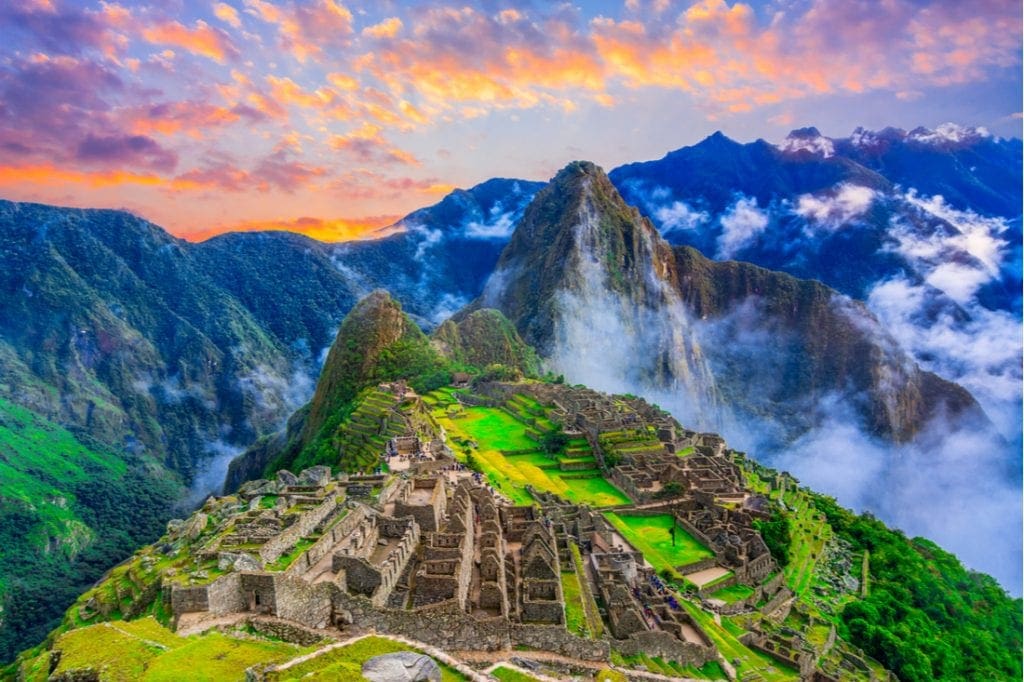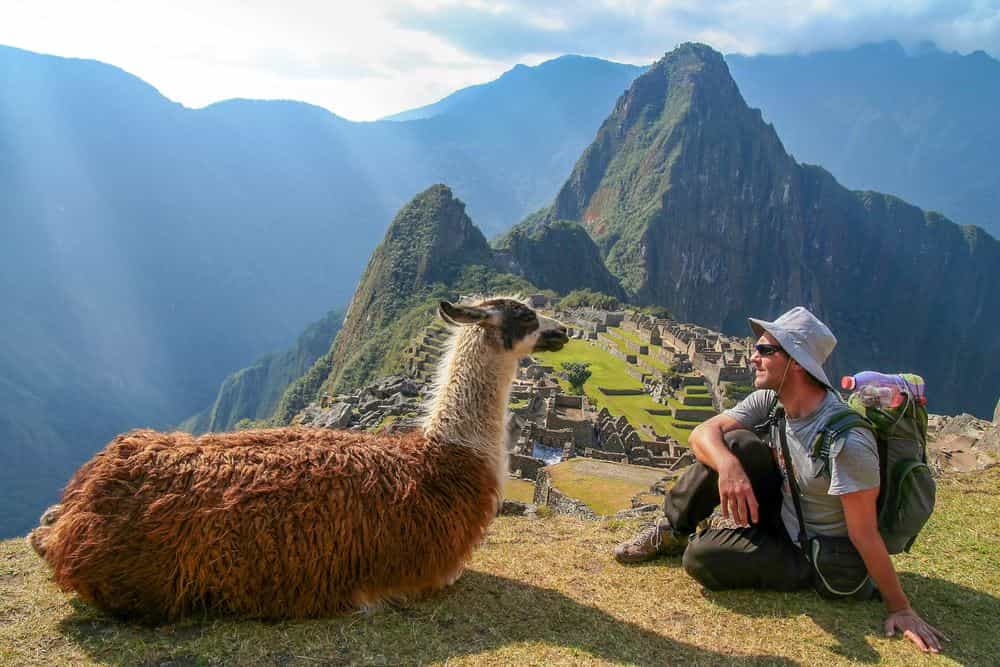
Peru, a land of breathtaking landscapes, ancient civilizations, and vibrant culture, beckons travelers with its captivating blend of history and modernity. From the towering peaks of the Andes to the lush Amazon rainforest, and from the enigmatic Nazca Lines to the bustling streets of Lima, Peru offers an experience unlike any other. This guide delves into the top things to do in Peru, providing you with the insights and information needed to plan an unforgettable journey.
A Glimpse into Peru’s Rich History:
Peru’s history is a tapestry woven with threads of indigenous empires, Spanish colonization, and a fierce struggle for independence. Before the arrival of the Spanish conquistadors, the Inca Empire reigned supreme, leaving behind an impressive legacy of architectural marvels, agricultural innovations, and intricate social structures.
Related Articles about Unveiling the Majesty of Peru: A Journey Through History, Culture, and Adventure:
- Unveiling the Rainbow Nation: Top Things to Do in South Africa
- Unveiling the Magic of Morocco: A Guide to the Top Things to Do
- Poland: A Journey Through History, Culture, and Breathtaking Beauty
- Switzerland: The Ultimate Travel Guide to Alpine Majesty and Urban Charm
- India: A Tapestry of Wonders – Your Ultimate Guide to Experiencing the Subcontinent
- The Inca Empire (1438-1533): The Incas, originating from the Cusco region, expanded their dominion across much of South America, creating a highly organized empire known as Tawantinsuyu, meaning "Land of the Four Quarters." Their achievements include sophisticated irrigation systems, a network of roads connecting the empire (the Qhapaq Ñan), and stunning architectural feats like Machu Picchu.
- Spanish Conquest (1532-1572): Francisco Pizarro led the Spanish conquistadors to Peru, exploiting internal conflicts within the Inca Empire and ultimately capturing and executing the Inca Emperor Atahualpa. The Spanish established a viceroyalty, ushering in a period of colonization and cultural exchange, but also oppression and exploitation of the indigenous population.
- Independence (1821): Fueled by Enlightenment ideals and inspired by other independence movements in the Americas, Peruvians, led by figures like José de San Martín and Simón Bolívar, fought for their liberation. Peru declared its independence in 1821, marking the beginning of a new era for the nation.
Top Things to Do in Peru:
-
Machu Picchu: The Lost City of the Incas:
No trip to Peru is complete without witnessing the awe-inspiring beauty of Machu Picchu. This UNESCO World Heritage site, perched high in the Andes Mountains, is a testament to the Incas’ architectural prowess and spiritual connection to nature.
- How to Get There: The most popular route is by train from Cusco to Aguas Calientes (Machu Picchu Pueblo), followed by a bus ride to the entrance. Adventurous travelers can opt for the multi-day Inca Trail trek.
- Things to Do: Explore the ruins, hike to Huayna Picchu or Machu Picchu Mountain for panoramic views, and learn about the history and significance of this ancient city.
- Travel Tip: Book your tickets and accommodation well in advance, especially during peak season. Hire a guide to fully appreciate the history and details of the site.
-
Cusco: The Historical Capital of the Inca Empire:
Cusco, a charming city nestled in the Andes, served as the historical capital of the Inca Empire. Its cobblestone streets, colonial architecture, and vibrant markets offer a fascinating glimpse into Peru’s past and present.
- Things to Do: Visit Plaza de Armas, the heart of Cusco; explore the Qorikancha (Temple of the Sun), a sacred Inca site; wander through the San Blas artisan neighborhood; and visit the Sacsayhuaman fortress overlooking the city.
- Nearby Hotels: Hotel Tierra Viva Cusco Plaza, Belmond Hotel Monasterio, Palacio Nazarenas, a Belmond Hotel, Cusco
- Local Food: Try "cuy" (guinea pig), "rocoto relleno" (stuffed peppers), and "chicha morada" (purple corn drink).
-
The Sacred Valley: A Land of Ancient Wonders:
The Sacred Valley, located between Cusco and Machu Picchu, is a fertile region dotted with Inca ruins, picturesque villages, and stunning landscapes.
- Things to Do: Visit the Pisac market, explore the Ollantaytambo fortress, hike through the Moray agricultural terraces, and marvel at the Maras salt mines.
- Travel Tip: Acclimatize to the altitude before embarking on strenuous activities in the Sacred Valley.
-
Lake Titicaca: The Highest Navigable Lake in the World:
Lake Titicaca, straddling the border between Peru and Bolivia, is the largest lake in South America and the highest navigable lake in the world. It’s a place of immense cultural significance, home to indigenous communities who maintain their traditional way of life.
- Things to Do: Visit the Uros floating islands, constructed entirely from reeds; explore Taquile Island, known for its traditional textiles; and experience the tranquility of Amantani Island.
- Transportation: Boat tours are the primary mode of transportation on Lake Titicaca.
- Nearby Hotels: Hotel Libertador Lake Titicaca Puno, GHL Hotel Lago Titicaca, Taypikala Hotel Lago.
-
The Nazca Lines: Enigmatic Geoglyphs in the Desert:
The Nazca Lines, massive geoglyphs etched into the desert sands of southern Peru, remain one of the world’s greatest archaeological mysteries. These intricate drawings depict animals, plants, and geometric shapes, and their purpose continues to be debated by scientists and historians.
- How to See Them: The best way to view the Nazca Lines is by taking an aerial tour in a small plane.
- Travel Tip: Book your flight in advance and be prepared for a bumpy ride.
-
Lima: The Culinary Capital of South America:
Lima, Peru’s bustling capital city, is a vibrant metropolis with a rich history, stunning architecture, and a world-renowned culinary scene.
- Things to Do: Explore the historic center, a UNESCO World Heritage site; visit the Larco Museum, home to an impressive collection of pre-Columbian artifacts; stroll along the Miraflores boardwalk overlooking the Pacific Ocean; and indulge in the city’s diverse culinary offerings.
- Local Food: Sample "ceviche" (marinated raw fish), "lomo saltado" (stir-fried beef), and "causa" (layered potato dish).
- Nearby Hotels: Hotel B, Belmond Miraflores Park, JW Marriott Hotel Lima.
-
The Amazon Rainforest: A Biodiversity Hotspot:
Peru is home to a significant portion of the Amazon rainforest, a biodiversity hotspot teeming with exotic wildlife, lush vegetation, and indigenous communities.
- How to Experience It: Take a guided tour from Iquitos or Puerto Maldonado, staying in eco-lodges and exploring the rainforest by boat and on foot.
- Things to Do: Spot monkeys, sloths, and colorful birds; go piranha fishing; learn about medicinal plants; and visit indigenous communities.
- Travel Tip: Pack light, wear long sleeves and pants to protect yourself from insects, and bring insect repellent.
-
Arequipa: The White City:
Arequipa, known as the "White City" for its stunning colonial architecture built from white volcanic stone (sillar), is a charming city nestled in the shadow of the Misti volcano.
- Things to Do: Visit the Santa Catalina Monastery, a beautiful colonial complex; explore the Plaza de Armas; hike to the Colca Canyon, one of the deepest canyons in the world; and sample the local cuisine.
- Local Food: Try "ocopa arequipeña" (potatoes in peanut sauce) and "chupe de camarones" (shrimp soup).
- Nearby Hotels: Casa Andina Premium Arequipa, Cirqa, Wyndham Costa del Sol Arequipa.
-
Trujillo: City of Eternal Spring:
Trujillo, located on the northern coast of Peru, is known as the "City of Eternal Spring" for its pleasant climate. It’s also a city rich in history and culture, home to the ruins of Chan Chan, the largest pre-Columbian city in South America.
- Things to Do: Explore Chan Chan, visit the Huaca de la Luna and Huaca del Sol temples, and stroll along the colorful streets of the historic center.
- Nearby Hotels: Wyndham Costa del Sol Trujillo, Hotel Libertador Trujillo, Casa Andina Standard Trujillo Plaza.
-
Paracas National Reserve:
Located on the coast, Paracas National Reserve offers stunning desert landscapes, dramatic cliffs, and abundant wildlife.
- Things to Do: Take a boat tour to the Ballestas Islands, often called the "Poor Man’s Galapagos," to see sea lions, penguins, and seabirds; visit the Paracas History Museum; and explore the desert landscapes by ATV.
Best Time to Visit Peru:
The best time to visit Peru depends on the region you plan to explore.
- Dry Season (May to September): This is the best time to visit the Andes region, including Machu Picchu and Cusco, as the weather is dry and sunny.
- Shoulder Seasons (April and October): These months offer a good balance of pleasant weather and fewer crowds.
- Wet Season (November to March): The wet season can bring heavy rainfall, especially in the Andes and the Amazon rainforest. However, it can also be a good time to visit if you don’t mind the rain and want to avoid the crowds.
Travel Tips for Peru:
- Altitude Sickness: Acclimatize gradually to the altitude, drink plenty of water, and avoid strenuous activities upon arrival in high-altitude destinations like Cusco and Puno.
- Currency: The Peruvian currency is the Nuevo Sol (PEN). US dollars are widely accepted, especially in tourist areas.
- Language: The official languages are Spanish and Quechua. English is spoken in tourist areas, but learning some basic Spanish phrases will be helpful.
- Safety: Be aware of your surroundings and take precautions against petty theft, especially in crowded areas.
- Health: Consult your doctor about necessary vaccinations and medications before traveling to Peru.
- Bargaining: Bargaining is common in markets and with street vendors.
- Respectful Tourism: Be respectful of local customs and traditions.
Transportation Options in Peru:
- Flights: Domestic flights are a convenient way to travel between major cities in Peru.
- Buses: Long-distance buses are a popular and affordable option for traveling between cities.
- Trains: Trains are available on some routes, such as Cusco to Aguas Calientes (Machu Picchu).
- Taxis: Taxis are readily available in cities, but be sure to negotiate the fare before getting in.
- Colectivos: Shared taxis or vans are a common and affordable way to travel short distances.
Conclusion:
Peru, with its rich history, diverse landscapes, and vibrant culture, offers an unparalleled travel experience. From the majestic Machu Picchu to the bustling streets of Lima, and from the tranquil shores of Lake Titicaca to the depths of the Amazon rainforest, Peru has something to offer every traveler. By planning your trip carefully, taking into account the best time to visit, and following the travel tips outlined in this guide, you can embark on an unforgettable journey through this captivating land. Prepare to be amazed by the beauty, history, and magic of Peru!








